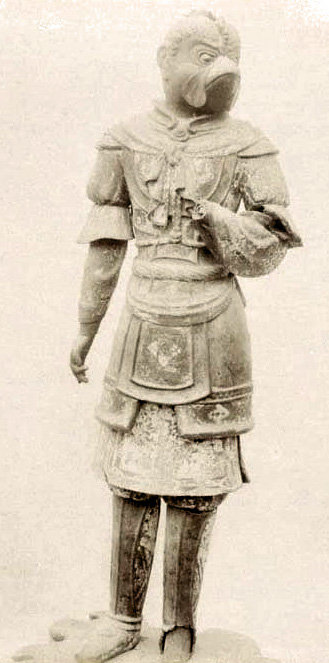
Table of Contents (The Complete Mahabharata in Simple English)
Previous Post: Elapatra’s Suggestion to His Snake Brothers
| Note: In the previous post, we read about Elapatra’s advice to his snake brothers. Elapatra had heard the conversation between Brahma Deva and other devas about how only the sinful snakes would perish in Janamejaya’s snake sacrifice and how the virtuous snakes would be saved. Even though these words gave some relief to Vasuki, they did not remove his anxiety completely because the future still felt uncertain. In this post, we will find out how the devas sought help from Brahma Deva for Vasuki. |
A very important cosmic event took place soon after Elapatra’s advice to his snake brothers. It was the Samudra Manthan where the devas and asuras got together to churn the ocean.
Vasuki, the chief of serpents who was gifted with great strength, offered to become the churning cord. After the Churning was over, Vasuki presented himself to Brahma Deva. The devas also went with Vasuki and told Brahma Deva that Vasuki was constantly concerned about the fate of the serpent race. He suffered from great anxiety because of his mother’s curse. The devas represented Vasuki as their friend and someone who had helped them. They requested Brahma Deva to be gracious to Vasuki and remove the root cause of his sorrow.
Note: I like this story because it shows the devas asking for help from one of the Tri-Devas for a friend. The devas tend to be grateful for the kindness and friendship they receive and repay it accordingly.
Brahma Deva replied to the devas, “O immortals, I have thought about the solution. Let the chief of snakes do what his brother Elapatra suggested. Rishi Jaratkaru has been born and is engaging in hard penances. Let Vasuki bestow his sister to the sage at the right time. What Elapatra said about the son born of the union of Vasuki’s sister and the sage is true. He will be a wise Brahmin full of energy and will stop the snake sacrifice as soon as the sinful serpents have perished. No virtuous serpent will be harmed in the sacrifice.”
Hearing Brahma Deva’s words, Vasuki immediately commanded all the serpents to watch rishi Jaratkaru and notify him as soon as he came looking for a wife.
| Note: In the next post, we will find out how rishi Jaratkaru got his name. |
Table of Contents (The Complete Mahabharata in Simple English)
Next Post: The Meaning of the Name Jaratkaru



